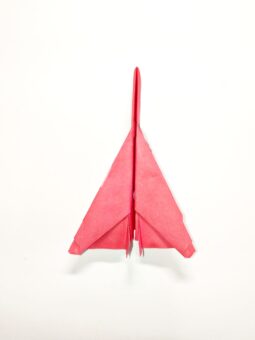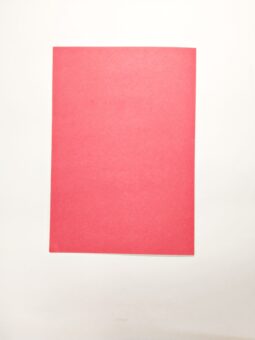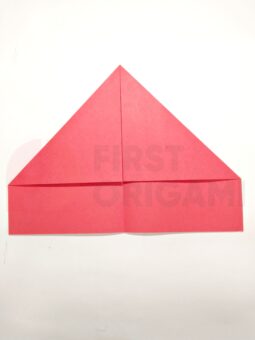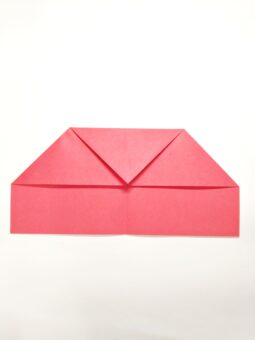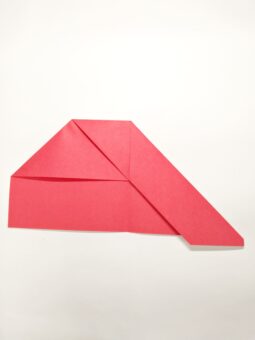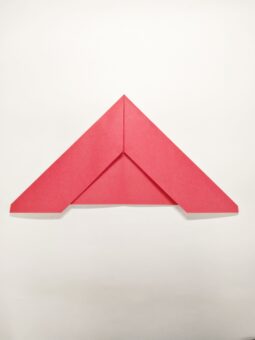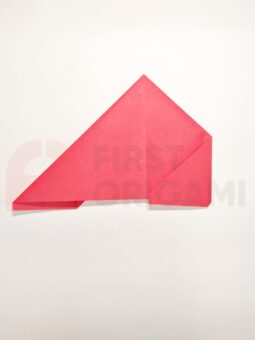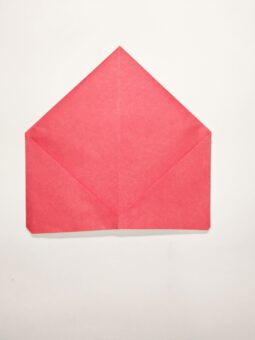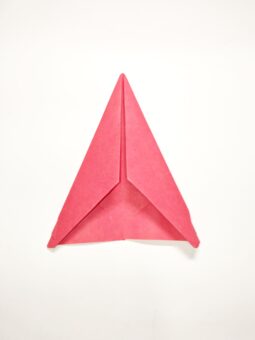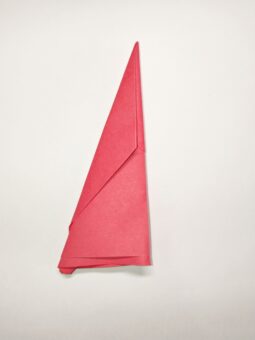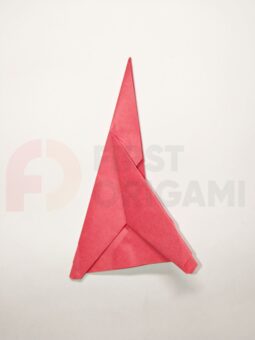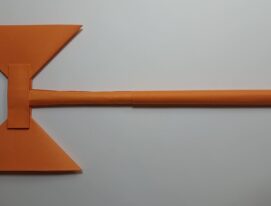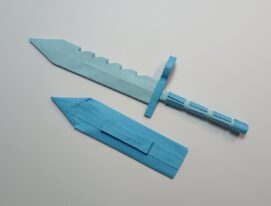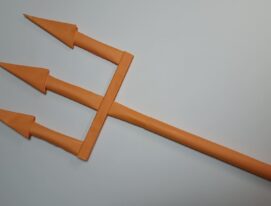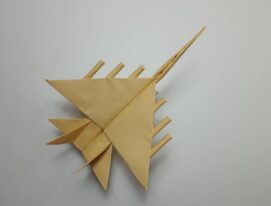Origami Navy Plane
Fighter jets are famous for their speed and their mini-paper versions are no exception. However, the compact model, dubbed the “naval aircraft,” stands out among others not only because of its remarkable speed but also for maintaining its altitude. As a result, it shows an impressive flight range: from an average launch altitude, the prototype is capable of covering distances of up to 11 meters.
During its creation, it is worth paying special attention to creasing the folds so that the model becomes as stable as possible. To make it, you only need a sheet of paper and a few minutes of free time.
Turn the figure over and bend the lower end of the shape so that the top of the corner lines up with the fold line.
Bend one wing diagonally relative to the base of the model. Please note that the tip of the triangle from the middle layer should extend slightly beyond the bend.
Fold the second wing of the airplane in the same way.
Bend back the overlapping corners to form a pair of vertical flaps in the middle of the rear.
You can now test-run your naval prototype and observe the flight path to make minor adjustments if necessary. If you notice that the plane is leaning too much forward or backward, adjust the center weight using a pair of staples or a regular paper clip. You can also create a pair of air flaps by making a couple of cuts in the back of each wing. By bending the valves at your discretion, it is also possible to change the inclination in flight, set a tendency to rise, or, on the contrary, to decline.
